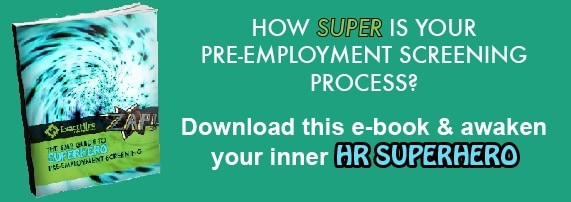Why Use Employee Assessments in Your Hiring Process?
We all know that turnover is expensive; however, so is the cost of having an under-performing employee who continues to work for your company. Consider also that terminating employees is more difficult due to the number of laws that exist. Is it any wonder that companies are becoming more diligent and taking additional steps in the hiring process to ensure they are hiring the right people? By “right people” I mean, candidates that have the same characteristics as your current top performers and ones that fit the job and the culture of your company.
X Factor Company Culture
Many different studies conclude that the companies that have proven to be great at identifying, hiring and retaining top talent are the most successful companies in their space. These companies usually have higher market capitalization values. One of the reasons is because having a top performing organization is hard to replicate, and leads to great cultures and the “X factor” that makes companies grow at accelerated rates and become more creative.
Many companies, when hiring, struggle with finding that right person for the job. While using tools like applicant tracking software and external job boards makes the process more efficient and helps with initial screening, help is needed when you get down to the short list of candidates you are considering.
As a result, more companies are using employee assessments to help with this process.
Identify Success Factors in Top Performing Employees
To start, consider how good of a job you have done in determining what the true success factors are for the job. A starting point should be to determine the traits/characteristics your top performers possess. This needs to be an objective process that you can utilize when interviewing potential candidates. To accomplish this, we recommend that our clients give their top performers a validated employee assessment to identify these success factors. From this you can develop a job success pattern against which potential candidates can be compared. This makes the process more objective, allowing you to be more prepared in your interview process and to focus on the areas of concern. It also helps to reduce the subjective nature of the questions and the answers that we typically see in an interview.
When you consider the fact that most of us are not that good at interviewing, we need all the help we can get. In fact, the interviewees are usually better prepared than the interviewer. Unfortunately, we tend to hire candidates that are more like us as interviewers, regardless of what the job requires. To make matters worse, we tend to reach that conclusion early in the interview.
The cost of these employee assessments and the additional time you spend in determining success factors really do pay big dividends. The payoff shows up in reduced turnover, shorter learning curves, less conflict in the workplace and better overall job and culture fit. You should work with your trusted advisors to help guide you through the process of selecting the right employee assessment tool and learning how to use it in your hiring process. Like they say, “If you don’t know where you are going, any road will take you there.”
If you’d like to learn more about which employee assessment tools might be right for your company, contact ExactHire.
Image credit: generator.x show ![]() by jared (contact)
by jared (contact)

